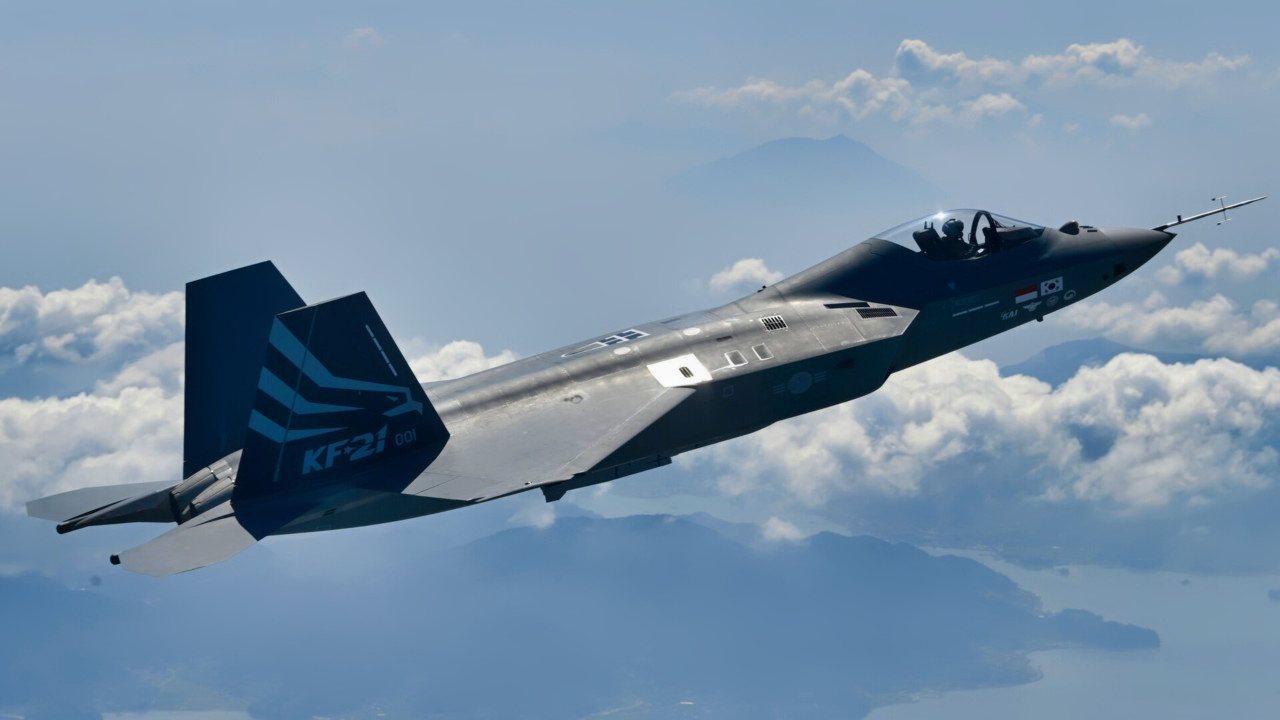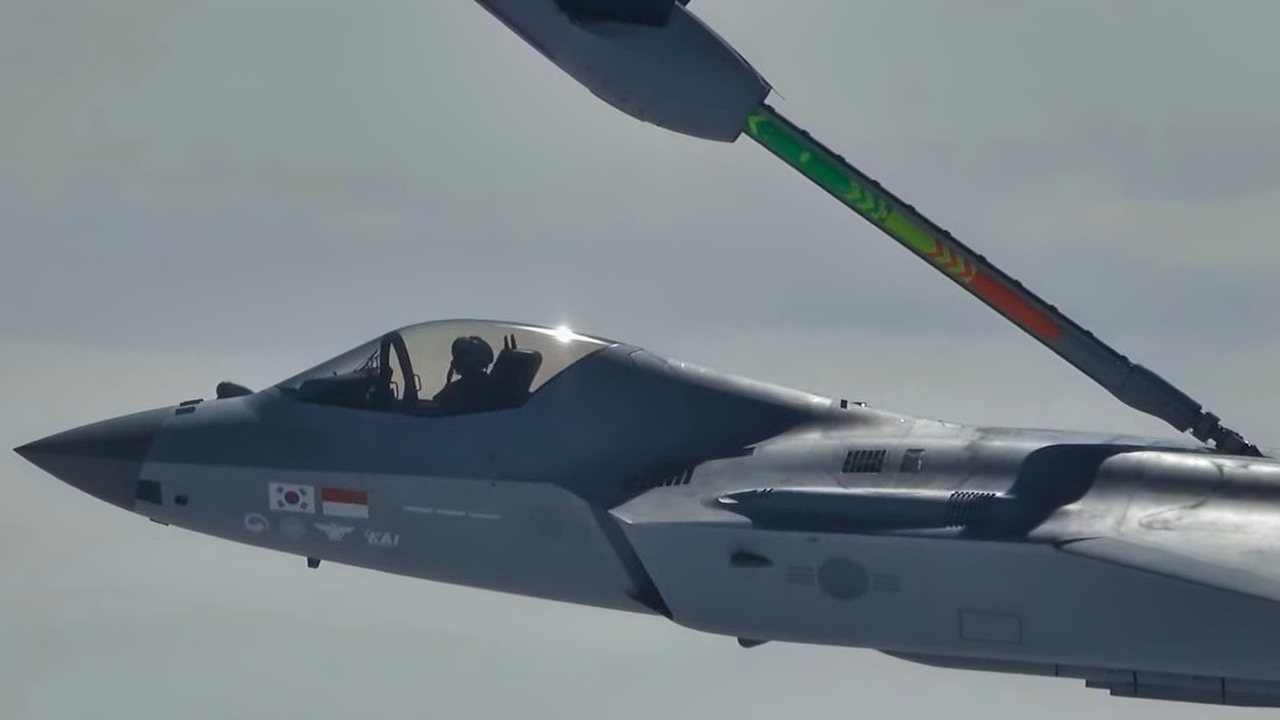KAI KF-21 Boromae: South Korea's 'Partial' Stealth Fighter
The KAI KF-21 Boromae, a joint project by Korean Aerospace Industries and Indonesian Aerospace, is South Korea’s latest 4.5-generation or “Fourth Gen+” fighter jet, with partial stealth capabilities.
What You Need to Know: The KAI KF-21 Boromae, a joint project by Korean Aerospace Industries and Indonesian Aerospace, is South Korea’s latest 4.5-generation or “Fourth Gen+” fighter jet, with partial stealth capabilities.

-First flown in 2022, the Boromae is designed to replace aging F-4 and F-5 fighters in the Republic of Korea Air Force (ROKAF). Equipped with twin GE F414 engines, the KF-21 can reach Mach 1.81 with a range of 1,000 km.
-The jet will undergo two phases of production, though an initial cut in production numbers raises questions. The KF-21 is slated for operational service by 2026.
KAI KF-21 Boromae: South Korea's New Fourth Gen+ Fighter
In Western folklore and pop culture, Boromir is a valiant warrior of Gondor and a member of the Fellowship of the Ring in J.R.R. Tolkien’s Lord of the Rings mega-franchise.
In the real world of South Korean warrior culture, more specifically the Republic of Korea Air Force (ROKAF), there is an up-and-coming fighter plane with a very similar sounding moniker. Say Annyeonghaseyo to the Korean Aerospace Industries (KAI) KF-21 Boromae (Young Hawk).
KAI KF-21 Boromae Initial History & Specifications
The KAF-21 Boromae, originally known as the KF-X, made her maiden flight on July 19, 2022, one year and three months after the prototype was unveiled. In more recent test flights the “Young Hawk” successfully carried out an aerial refueling op.
She is a joint manufacturing venture between the aforementioned Korean Aerospace Industries, Ltd., headquartered in Sacheon, South Korea, and Indonesian Aerospace, headquartered in Bandung, West Java.
This warbird is intended to be manufactured in two blocks:
Block One, a pure air superiority fighter

Block Two, a multirole combat aircraft.
Some would consider her to be a 4.5 Generation or “Fourth Generation +” fighter, while others could conceivably make the argument that she’ll qualify for Fifth Generation fighter status, as the plane does incorporate some stealth technologies.
The warbird reportedly has the following specifications and vital stats:
Fuselage Length: 16.9 m (fifty-five feet four inches)
Wingspan: 11.2 m (36 ft 7 in)
Height: 4.7 m (15 ft 4 in)
Max Takeoff Weight: 25,600 kg (56,400 lb)
Powerplant: two General Electric F414-GE-400K, manufactured under license by Hanwha Aerospace turbofan, 57.8 kN (13,000 lbf) thrust each [186] dry, 97.9 kN (22,000 lbf) with afterburner
Max Airspeed: Mach 1.81 (2,200 km/h; 1,400 mph; 1,200 kn)
Combat range: 1,000 km (620 mi, 540 nmi)
A total of six prototypes have been built thus far.
Additional Features for KF-21
Regarding the Boromae’s partial stealth features and whether the warbird should be classified as 4.5 Generation/” Fourth Generation plus” as opposed to a true Fifth Generation fighter, my colleague Peter Suciu sheds some additional light on that discussion in that discussion, “The KF-21 isn't officially designated a stealth fighter, in part because its external stores will significantly compromise low observability, yet, its overall radar-reflective design offers a degree of delayed detection against enemy surface-to-air radar arrays….The Boramae has been further noted for bearing a passing resemblance to the U.S. Air Force's F-22 Raptor, and the similarities are likely by design. Lockheed Martin, the maker of the Raptor, partnered with KAI to provide technical support during the development of the KF-21…As previously reported by Alex Hollings for The National Interest, ‘The KF-21 is a unique aircraft that incorporates a variety of 5th-generation (or stealth) design elements while still carrying munitions externally like older 4th-generation platforms.’"
The planes are slated to replace South Korea’s fleet of venerable but obsolescent F-4 Phantom II and F-5 Tiger II fighters.
The Way Forward
The KF-21 is intended to enter official operational service with the ROKAF in the second half of 2026. Accordingly, this past July KAI kicked off mass production of the plane, with this production run slated to take place from 2024 to 2027.
However, there are some signs of trouble in (proverbial) paradise on the horizon. As Mr. Suciu reported in an earlier National Interest article, the ROK’s Defense Acquisition Program Administration (DAPA) announced plans to produce a mere 20 KF-21 airframes this year, a full fifty percent reduction from the initially planned forty units. The decision was motivated by a desire to address concerns from a feasibility study conducted last year. As it stands, this curtailed production plan is worth 2.63 trillion won (USD 1.9 billion).
Time will tell. Stay tuned, ladies & gentlemen.
About the Author
Christian D. Orr is a Senior Defense Editor for National Security Journal (NSJ). He is a former Air Force Security Forces officer, Federal law enforcement officer, and private military contractor (with assignments worked in Iraq, the United Arab Emirates, Kosovo, Japan, Germany, and the Pentagon). Chris holds a B.A. in International Relations from the University of Southern California (USC) and an M.A. in Intelligence Studies (concentration in Terrorism Studies) from American Military University (AMU). He has also been published in The Daily Torch, The Journal of Intelligence and Cyber Security, and Simple Flying. Last but not least, he is a Companion of the Order of the Naval Order of the United States (NOUS).
Image Credit: Creative Commons and/or Shutterstock.


